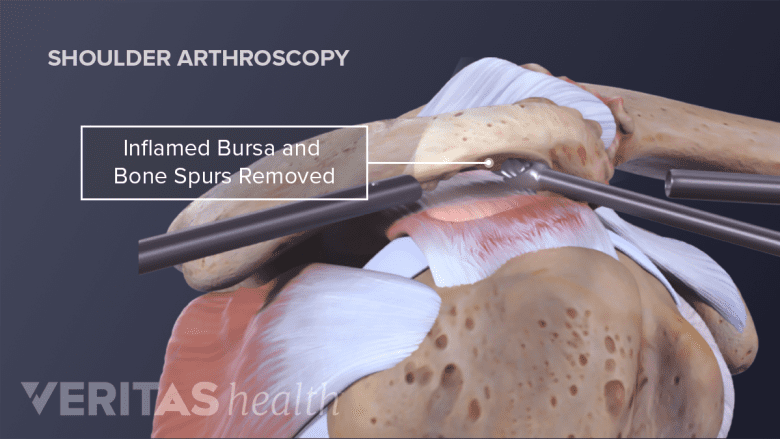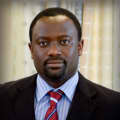Most people with torn rotator cuffs do not require surgery, but surgery may be recommended when the patient has:
- Moderate to significant pain and weakness in the shoulder,
- Not benefited from nonsurgical treatment, such as physical therapy,
- A large cuff tear, and/or,
- A tear(s) produced by a new injury.

Rotator cuff tears are usually caused by trauma, tissue degeneration, and shoulder impingement.
In This Article:
Goals of Rotator Cuff Surgery
Reducing pain is the first goal of surgery. Increasing shoulder function is another, but several factors influence this outcome: patient’s age, rehabilitation program, and the tear’s size and age.1S. Terry Canale MD, James H. Beaty MD. Campbell's Operative Orthopaedics: Pt. XVI. Peripheral nerve injuries. Peripheral nerve injuries. Mosby; 2013. Rotator cuff surgery is an elective procedure, meaning it is the patient’s choice.
See Rotator Cuff Injuries: Initial Treatment
Deciding on Rotator Cuff Surgery
Rotator cuff tears can result from a one-time event, like a fall, or develop over time, causing little to no pain at first. When tears cause symptoms, nonsurgical treatment provides pain relief and improved function in about 50% of patients.2Rotator Cuff Tears. American Academy of Orthopaedic Surgeons website. http://orthoinfo.aaos.org/topic.cfm?topic=a00064 Last reviewed: May 2011. Accessed April 19, 2016.
Patients who decide to have rotator cuff surgery usually notice a decrease in pain and other symptoms. However, patients with large to very large tears tend to have a high incidence of re-tears.3Gilot GJ, Attia AK, Alvarez AM. Arthroscopic repair of rotator cuff tears using extracellular matrix graft. Arthrosc Tech. 2014;3(4):e487-9.
See Rotator Cuff Injuries: Symptoms
Rotator cuff surgery is not recommended for a person who has a rotator cuff tear as well as shoulder stiffness due to adhesive capsulitis, also known as frozen shoulder.1S. Terry Canale MD, James H. Beaty MD. Campbell's Operative Orthopaedics: Pt. XVI. Peripheral nerve injuries. Peripheral nerve injuries. Mosby; 2013. Substantial stiffness needs to be treated prior to surgery to prevent postoperative stiffness.1S. Terry Canale MD, James H. Beaty MD. Campbell's Operative Orthopaedics: Pt. XVI. Peripheral nerve injuries. Peripheral nerve injuries. Mosby; 2013.
What Happens During Rotator Cuff Surgery?

Arthroscopic surgery involves removal of bone spurs or inflamed bursa in the rotator cuff area.
Surgery typically involves:
- Making space for the rotator cuff tendons to move
- The surgeon removes loose fragments in the rotator cuff area, such as bone spurs, pieces of tendon, or inflamed sections of the bursa sac. This procedure is called shoulder debridement.
- The surgeon might also shave down the acromion bone that located at the top of the shoulder, which can pinch the rotator cuff. This procedure is called shoulder decompression.
- Stitching together the torn edges of the damaged rotator cuff and re-attaching it to the humerus bone.
The three most common surgery types to treat rotator cuff tears are:4Ghodadra NS, Provencher MT, Verma NN, Wilk KE, Romeo AA. Open, Mini-open, and All-Arthroscopic Rotator Cuff Repair Surgery: Indications and Implications for Rehabilitation. Journal of Orthopaedic & Sports Physical Therapy. 2009; 39: 81-89.
- Open repair surgery, which requires a 4 to 6 cm incision.
- Arthroscopic repair, surgery involving one or more incisions of less than 1 cm.
- Mini-open repair, which is a combination of open and arthroscopic surgery, and includes an incision of 1 to 5 inches, depending on the repair. This technique may be used when a patient has more than one tendon tear.1S. Terry Canale MD, James H. Beaty MD. Campbell's Operative Orthopaedics: Pt. XVI. Peripheral nerve injuries. Peripheral nerve injuries. Mosby; 2013.
See Shoulder Decompression: Arthroscopy vs Open Surgery
The surgery type used depends several factors, including:
- The surgeon’s knowledge and experience with a particular surgery
- Patient factors, including tear size, body structure, and tissue and bone quality
Rotator cuff surgery is usually successful. It can take 4 to 6 months to recuperate from surgery and sometimes up to a year for a full recovery.
- 1 S. Terry Canale MD, James H. Beaty MD. Campbell's Operative Orthopaedics: Pt. XVI. Peripheral nerve injuries. Peripheral nerve injuries. Mosby; 2013.
- 2 Rotator Cuff Tears. American Academy of Orthopaedic Surgeons website. http://orthoinfo.aaos.org/topic.cfm?topic=a00064 Last reviewed: May 2011. Accessed April 19, 2016.
- 3 Gilot GJ, Attia AK, Alvarez AM. Arthroscopic repair of rotator cuff tears using extracellular matrix graft. Arthrosc Tech. 2014;3(4):e487-9.
- 4 Ghodadra NS, Provencher MT, Verma NN, Wilk KE, Romeo AA. Open, Mini-open, and All-Arthroscopic Rotator Cuff Repair Surgery: Indications and Implications for Rehabilitation. Journal of Orthopaedic & Sports Physical Therapy. 2009; 39: 81-89.

